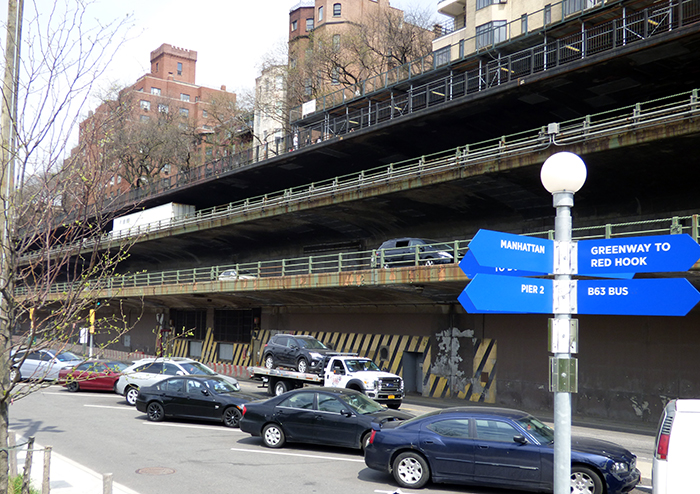City to issue RFP for $1.7B Brooklyn Heights BQE rehab design in May
Cantilever repairs to take 10 years

A Request for Proposals (RFP) will soon be issued for a $1.7 billion project to rehab the crumbling Brooklyn Queens Expressway (BQE) triple cantilever underpinning the Brooklyn Heights Promenade. Photo by Mary Frost
A Request for Proposals (RFP) will soon be issued for the 10-year, $1.7 billion project to rehabilitate the crumbling, 62-year-old Brooklyn-Queens Expressway (BQE) triple cantilever underpinning the Brooklyn Heights Promenade.
NYC Department of Transportation (DOT) officials briefed the Brooklyn Heights Association (BHA) and other stakeholders on April 20.
The structure is in appalling shape. Concrete on the BQE’s walls is missing in places, exposing reinforcing bars that are completely rusted. Netting has been installed under the decks to prevent concrete from falling.

Brooklyn Heights
View MoreRead the Brooklyn Height's Press and Cobble Hill News. Find out more about Brooklyn Height's History here.